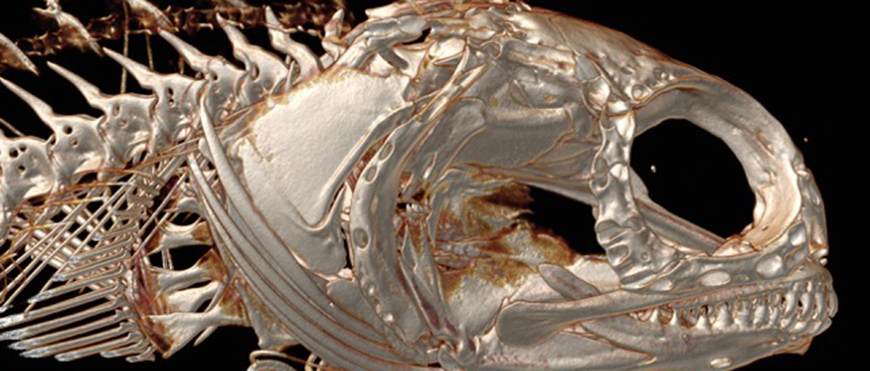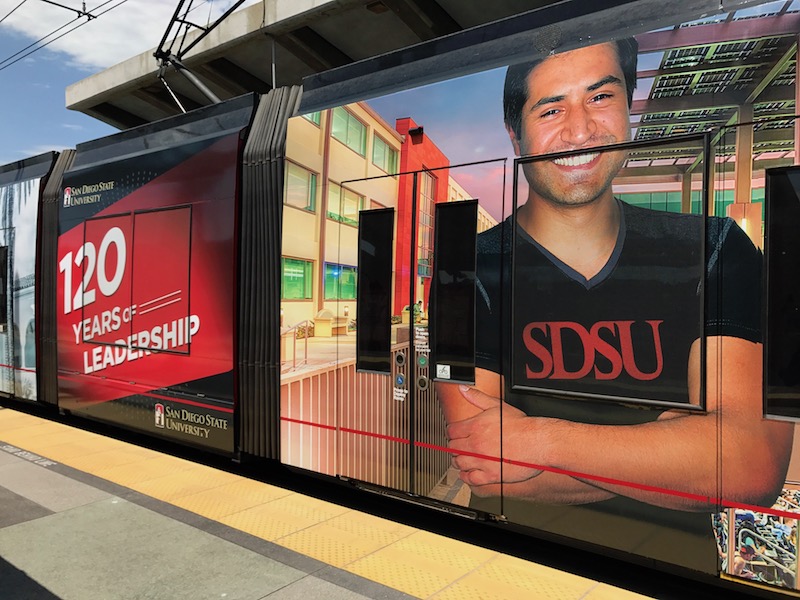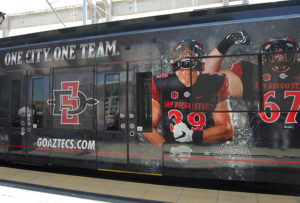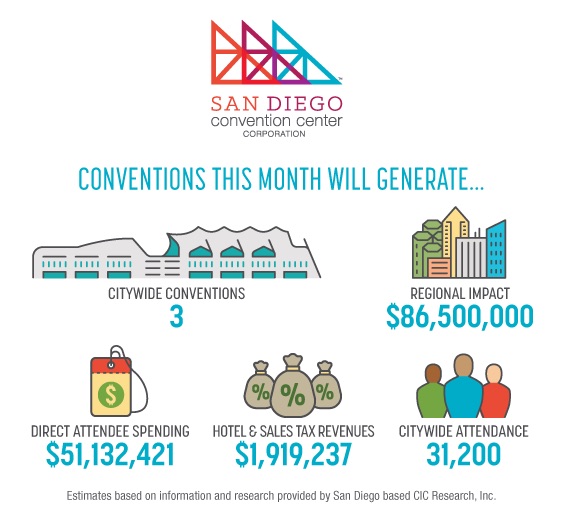Daily Business Report-Sept. 5, 2017
Image via Thinkstock
California Lawmakers try to Ease
California’s Teacher Shortage
By Jessica Calefati | CALmatters
California’s students may be headed back to school, but in some places, there aren’t enough teachers there to greet them due to a statewide teacher shortage.
The problem is especially acute in pricey places like San Francisco, where more than 10 percent of teachers unexpectedly resigned over the summer, leaving hiring managers scrambling to fill the gaps.
While the shortage is sure to play a prominent role in next year’s race for state superintendent of public instruction, lawmakers have already introduced a slew of proposals that seek to provide relief—through housing subsidies, tax breaks and stipends—much sooner. The fate of these ideas will be decided within the next few weeks.
Here’s what you need to know: What’s behind the problem?
Lawmakers say California’s supply of new teachers is at a 12-year low because of a precipitous drop in students training to be educators, meaning the state is at risk of graduating too few teachers to meet demand.
Experts blame the state’s rising cost of living and growing pressure to boost student performance on state tests. Research shows that concerns about salary and working conditions are deflating interest in the job.
But the nonpartisan Legislative Analyst’s Office warns that this assessment of the problem is oversimplified.
Counting newly credentialed teachers, out-of-state applicants and teachers switching districts, the total number of available teachers exceeds the number of new hires districts project they’ll need to make—and has for the last few years, according to the LAO.
That said, longstanding shortages in certain subject areas and types of schools aren’t in dispute. The California Department of Education has recorded shortages of special education, math and science teachers nearly every year since 1990, and research shows that teacher turnover is especially acute in urban schools and districts serving impoverished students.
In fact, one newly published study finds that turnover accounts for 90 percent of all open teaching positions across the country. Study author Desiree Carver-Thomas of the Learning Policy Institute called turnover a “vicious cycle” that unfairly impacts disadvantaged students.
“Schools hardest hit by turnover are often forced to hire underqualified teachers,” she said. “And under-qualified teachers are the most likely to leave.”
What’s the Legislature doing about it?
Democratic lawmakers this year introduced more than a dozen bills to address the problem.
Several measures focus on making affordable housing more available to teachers with modest salaries—a problem, the state began tackling last year.
Assembly Bill 45,authored by Assemblyman Tony Thurmond of Richmond, would provide $25 million to districts for teacher rental housing.
AB 1157 by Assemblyman Kevin Mullin of San Mateo, would encourage districts to turn surplus property into employee housing.
, AB 1182 by Assemblyman Evan Low of Cupertino, would offer down-payment assistance to teachers in high-cost counties.
Other measures aim to reduce teachers’ taxes and fees and boost their Senate Bill 807,authored by Sen. Henry Stern of Calabasas, would exempt teachers from paying state income tax on salary earned in the classroom.
AB 410 by Assemblywoman Sabrina Cervantes of Corona, would prohibit districts from charging new teachers fees for training.
AB 568 by Assemblywoman Lorena Gonzalez Fletcher of San Diego, would give teachers six weeks of paid maternity leave.
“It’s going to take something really visionary to lift teacher pay,” Stern has said. “Let’s go big.”
But his proposal and Low’s idea of providing down-payment assistance to teachers both failed to clear key committee votes, stalling due to their high cost to the state.
The other measures may face similar scrutiny when the Legislature’s fiscal committees meet to review them in the coming weeks.
Which Policy Solutions Stil on the Table?
The state budget Gov. Jerry Brown signed in June includes $25 million for grants to help some school employees complete their undergraduate degrees and obtain their teaching credentials. It also includes $5 million for training to boost the number of bilingual teachers.
Voters last year approved Proposition 58, which repealed a ban on bilingual instruction, so demand for dual-language programming is expected to increase.
One proposal set to be reintroduced next year after failing inclusion in this year’s budget is AB 169 by Democratic Assemblyman Patrick O’Donnell of Long Beach. It would provide $20,000 to about 1,000 students who train to become teachers and agree to work in hard-to-staff subject areas for at least four years.
“This is the start of the conversation, not the end,” O’Donnell said. “The problem isn’t going away. We can’t ignore it.”
The best way to boost teachers’ interest in hard-to-staff subject areas and eliminate those long-standing shortages in math, science and special education classrooms? Raise the salary for those jobs, said Natasha Collins, a senior fiscal and policy analyst with the LAO.
But since most California public school teachers are unionized—their pay scales collectively bargained and based almost exclusively on education attained and years of experience—such a policy solution would be tough to achieve.
“It’s a touchy subject,” Collins said. “There are real challenges in providing targeted salary increases, even though data indicates this is the most compelling way to achieve the goal.”
CALmatters is a nonprofit, nonpartisan media venture explaining California’s policies and politics.
________________

Scripps to Participate in Project to Create
3-D Digital Archive of Every Vertebrate Genus
A new initiative funded by the National Science Foundation will yield 3-D images of the external and internal anatomy of 20,000 specimens representing nearly every genus of vertebrate, including fishes, amphibians, reptiles, birds, and mammals. The computer tomography (CT) scans will be made available online to researchers, educators, students, and the public.
The project, called oVert, short for openVertebrate, complements other NSF-sponsored museum digitization efforts, such as iDigBio and the digital Fish Library, by adding a crucial component that has been difficult to capture — the intact skeleton and other internal features of a vast array of specimens. The Marine Vertebrate Collection of Scripps Institution of Oceanography at the University of California San Diego — which houses more than two million fish specimens, representing over 90 percent of the world’s fish families and nearly 6,000 species from around the globe — will provide samples for scanning as part of the project. The Florida Museum of Natural History at the University of Florida (UF) leads the effort, with 16 research institutions participating.
________________

SDSU Partners with MTS for SDSU-Themed Trolley
San Diego State University has delivered an invitation to San Diegans to celebrate a shared anniversary. A newly wrapped San Diego trolley announcing SDSU’s 120th year went public, thanks to a collaboration between SDSU and the San Diego Metropolitan Transit System (MTS).

The university will celebrate its birthday throughout the fall semester with lectures, campus tours and other special events.
The SDSU edition of the trolley also carries a “ONE CITY. ONE TEAM.” design on the opposite side — a reference to the Aztecs’ new status as San Diego’s primary football team.
“SDSU’s positive impact on the San Diego region today is unmistakable—just as it has been throughout our 120-year history,” said SDSU Athletic Director John David Wicker. “We are the football team playing in Mission Valley for the last 50 years, and we plan on being here for at least another 50.”
________________

SDSU Named Top School for LGBTQ Students
San Diego State University continues to rank among the best universities in the nation for supporting LGBTQ students. The Campus Pride Index recently ranked SDSU on its 2017 Best of the Best” Top 25 list of LGBTQ-friendly colleges and universities. SDSU has been included in this ranking for the past eight years.
The Campus Pride Index is a tool that compares LGBTQ-friendly policies, programs and practices on college campuses. Campus Pride works alongside students, faculty, staff and administrators at more than 1,400 campuses to help support and improve the quality of campus life for LGBTQ people.
________________

Upcoming Major Events at the
San Diego Convention Center
- Custom Electronic Design & Installation Association (CEDIA), Sept. 5-9 (18,000 attendees)
- Bridal Bazaar, Sept. 17 (5,000 attendees)
- Small Business Expo 2017, Sept. 21 (5,000 attendees)
- ASTRO — American Society for Radiology Oncology, Sept. 24-27 (12,000 attendees)
- San Diego Quilt Show, Sept. 28-30 (5,800 attendees)
________________
State Stem Cell Agency Awards $18.2M
Grant for B Cell Cancer Clinical Trial
The Independent Citizens Oversight Committee of the California Institute for Regenerative Medicine (CIRM) unanimously approved an $18.29 million grant to University of California San Diego School of Medicine researchers to fund a clinical trial of a novel combination drug therapy for B-cell cancers.
The new combined drug trial, intended to study both safety and efficacy, is headed by Thomas Kipps, MD, professor of medicine and deputy director of research at UC San Diego Moores Cancer Center, in collaboration with colleagues at the UC San Diego CIRM Alpha Stem Cell Clinic — the cell therapy arm of the Sanford Stem Cell Clinical Center at UC San Diego Health.
The approach combines an experimental monoclonal antibody-based drug called cirmtuzumab with ibrutinib, a small molecule drug that inhibits a protein called Bruton’s tyrosine kinase.



